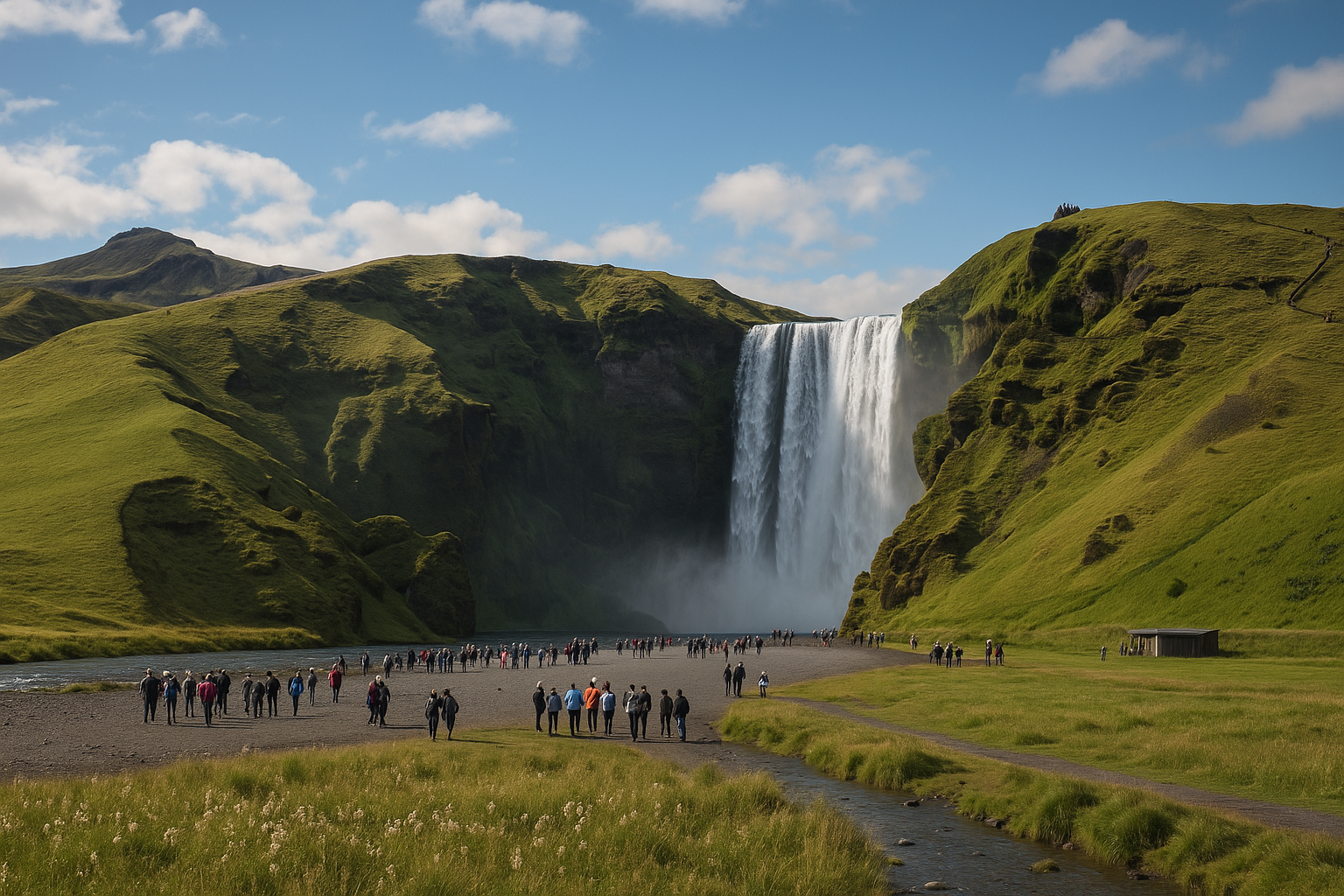Booming tourism drives Iceland’s GDP, but threatens ecosystems and stability
Tourism in Iceland has undergone an extraordinary transformation, rising from a relatively minor sector to the country’s most important economic engine. The study finds that by 2023, tourism contributed 8.8% of the country’s gross domestic product (GDP), surpassing fisheries and aluminium production, traditionally the backbone of Iceland’s exports.

- Country:
- Iceland
Iceland’s booming tourism sector has become a central force in the nation’s economy, outpacing traditional industries and providing critical foreign exchange and employment. Yet, a new study warns that this growth has brought escalating structural vulnerabilities and environmental risks that must be addressed with strategic policy shifts.
The research, titled “Navigating Growth and Sustainability: Analysing the Economic Impact of Tourism in Iceland,” was published in the journal Tourism and Hospitality and presents a decade-spanning assessment of Iceland’s tourism economy from 2003 to 2023.
How has tourism shaped Iceland’s economic trajectory?
Tourism in Iceland has undergone an extraordinary transformation, rising from a relatively minor sector to the country’s most important economic engine. The study finds that by 2023, tourism contributed 8.8% of the country’s gross domestic product (GDP), surpassing fisheries and aluminium production, traditionally the backbone of Iceland’s exports.
The sector's ascent was marked by surges in visitor arrivals, driven by campaigns like "Inspired by Iceland," improved international air connectivity, and the island’s global branding as a pristine nature-based destination. Between 2013 and 2018, visitor numbers by air more than tripled, peaking at over 2.3 million in 2018. This trend was temporarily disrupted by the COVID-19 pandemic, during which arrivals collapsed, only to rebound swiftly in the following years. By 2024, international arrivals approached pre-pandemic levels once again.
Tourism’s role in foreign currency generation is equally critical. In 2017, it accounted for more than 35% of all foreign exchange revenues. Although this fell sharply during the pandemic, the sector had regained a 27.3% share by 2023. The industry also plays a substantial role in employment, with tourism-related jobs doubling between 2013 and 2018. While the pandemic caused a dip, the sector’s workforce rebounded by 2023.
What are the structural vulnerabilities of Iceland’s tourism boom?
Despite its economic rewards, the rapid expansion of tourism has introduced significant risks. Iceland’s tourism economy is highly seasonal, heavily reliant on summer travel and air access from a few source markets, chiefly the United States and Western Europe. This concentration exposes the nation to fluctuations in airline operations, fuel prices, and global demand, making the economy acutely sensitive to external shocks.
The pandemic was a clear stress test. It demonstrated how deeply tourism drives Iceland’s economic rhythms and highlighted the absence of a strong domestic tourism market to cushion declines in international demand. Moreover, infrastructure pressures and uneven regional distribution of visitors have exacerbated the fragility of Iceland’s tourism-dependent regions.
Seasonal volatility continues to pose employment challenges, with temporary contracts, wage instability, and workforce shortages prevalent in remote areas. Meanwhile, the sharp influx of cruise ship passengers, over 850,000 in 2023, has brought in short-term volume without proportionate local spending, challenging sustainable port development and crowd management strategies.
Further, the study shows that the focus on tourism has come at the expense of economic diversification. Iceland’s overdependence on this single sector leaves it vulnerable to geopolitical tensions, inflationary pressures, and environmental shocks. The research underscores the need for a stronger foundation in alternative industries like renewable energy, sustainable fisheries, and digital innovation to create economic resilience.
How can Iceland align growth with sustainability?
The core message of the study is that Iceland’s future prosperity depends on rebalancing tourism growth with sustainability and community well-being. The current model, while economically fruitful, is testing the limits of infrastructure and natural ecosystems, particularly in ecologically sensitive regions. The risks of over-tourism, overcrowding, and environmental degradation have become more pronounced, prompting the government to explore new regulatory mechanisms.
One of the key policy proposals discussed in the study is the introduction of a natural resource or arrival tax to internalize the environmental costs of tourism. Such a levy, if scaled seasonally and geographically, could fund infrastructure upgrades and conservation efforts without harming the visitor experience. However, the study stresses that this policy must be developed through stakeholder consultation and transparency to ensure local support.
The study also advocates for the use of adaptive sustainability indicators that are co-developed with local communities. These indicators would enable real-time monitoring of tourism’s environmental and social impact and help policymakers adjust regulations accordingly. In parallel, workforce development programs could address seasonal job instability, while investment incentives could promote off-season and regional tourism to distribute visitor flows more equitably.
Global parallels strengthen Iceland’s case for reform. European Union countries and China have begun incorporating tourism into broader sustainability and regional equity agendas. These models suggest that when managed inclusively, tourism can support rural revitalization and national development goals. For Iceland, embedding tourism planning within national sustainability frameworks can offer long-term benefits that extend beyond GDP contributions.
A path forward
Iceland stands at a critical juncture. While its tourism sector has rebounded robustly and continues to fuel economic growth, the current trajectory risks undermining the very natural and cultural assets that make Iceland attractive. To safeguard long-term prosperity, the country must adopt a multidimensional strategy that integrates tourism within a broader vision of national resilience, environmental stewardship, and inclusive economic development.
Key recommendations include:
- Introducing scalable taxation mechanisms to fund conservation and infrastructure;
- Encouraging geographic and seasonal dispersion of visitors;
- Promoting year-round employment through labor incentives;
- Strengthening monitoring systems to guide adaptive governance;
- Diversifying the economy to reduce exposure to tourism shocks.
With these actions, Iceland can transition from a volume-driven tourism model to one that prioritizes sustainability, equity, and long-term national interest.
- FIRST PUBLISHED IN:
- Devdiscourse










